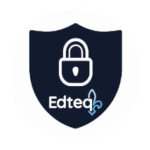Fort pertinente, la technologie de réalité augmentée sert le milieu de l’éducation, mais n’est pas encore parfaite.
Technologie embryonnaire et parfois coûteuse
Rudimentaire à certains égards, le matériel et les interfaces utilisés en réalité augmentée présentent des limites technologiques et ergonomiques qui altèrent leur manipulation.
Certaines difficultés rencontrées en contexte d’apprentissage sont en effet difficiles à anticiper. Lors de l’utilisation d’appareils mobiles à l’extérieur, par exemple, la qualité de l’image observée par l’élève peut être altérée par le reflet du soleil ou la température. De plus, la consommation énergétique de certaines applications est importante et la géolocalisation n’est pas toujours parfaitement précise.
Achetés à fort prix dans certains cas, les appareils mobiles et leurs outils complémentaires sont difficilement accessibles à tous. Des établissements scolaires hésitent alors à se les procurer en grande quantité en raison des coûts d’achat et des frais d’entretien. Cette réticence freine ainsi indirectement les ambitions des concepteurs à développer davantage. Probablement pour cette raison, peu d’outils, de livres augmentés ou de jeux sérieux sont disponibles en langue française. Pour le moment, la grande majorité est disponible en anglais.
Gestion des métadonnées
La gestion des données personnelles de localisation et leur sauvegarde représentent aussi un enjeu. Infonuagiques, elles deviennent facilement accessibles si elles ne sont pas sécurisées, notamment lors de l’utilisation dans les lieux publics.
Connaissances et habiletés des acteurs de l’éducation
Des connaissances et des savoir-faire sont nécessaires pour produire et utiliser de façon optimale une technologie comme la réalité augmentée à des fins éducatives.
La recherche doit donc continuer afin de développer des applications de la réalité augmentée propres à l’éducation ainsi que pour déterminer la manière de les implanter en classe. En effet, l’apport de ces activités doit être significatif à l’apprentissage des élèves et doit aller au-delà de l’attrait de la nouveauté.
Or, il est parfois difficile de rassembler des acteurs qui maîtrisent autant les connaissances techniques pour créer et déployer des modèles de la réalité augmentée que les connaissances et les compétences pour l’apprentissage et le design pédagogique. Dans les circonstances, serait-ce préférable de former les enseignants à ces technologies? Faudrait-il travailler à la simplification des outils et des applications? Au stade de développement actuel, plusieurs facilitateurs sont nécessaires pour implanter adéquatement la réalité augmentée et ainsi minimiser les problèmes techniques.
Impacts réels méconnus en éducation
La recherche concernant la réalité augmentée en éducation demeure une pratique relativement récente et la littérature scientifique et les études objectives sont plutôt rares. Décrivant et expliquant le phénomène, les études s’attardent peu aux normes et aux standards.
Ainsi, bien que les élèves semblent s’intéresser à ce phénomène, il est encore trop tôt pour mesurer son impact réel sur l’apprentissage. L’aspect ludique et distrayant suscite l’intérêt des utilisateurs certes, mais il est difficile de déterminer s’ils sont plus intéressés par la technologie et le divertissement que par l’apprentissage. Si tel est le cas, l’objectif n’est pas atteint et des conclusions sur leurs retombées éducatives ne peuvent être tirées.
—
Sommaire du dossier
- La réalité augmentée au service de l’apprentissage
- La réalité augmentée, d’hier à aujourd’hui
- La petite histoire de la réalité augmentée
- Définir la réalité augmentée
- Quelle est l’utilité de la réalité augmentée?
- La réalité augmentée et son apport à l’éducation
- Changement dans l’approche pédagogique
- Intégration en classe
- Outils pédagogiques
- Des exemples dans différentes matières
- Avantages éducatifs de la réalité augmentée
- Les limites de la réalité augmentée en éducation
- Technologie embryonnaire et parfois coûteuse
- Gestion des métadonnées
- Connaissances et habiletés des acteurs de l’éducation
- Impacts réels méconnus en éducation
- Ressources et références




 Recevez l'Info #DevProf et l'Hebdo pour ne rien manquer des nouveautés de l'École branchée!
Recevez l'Info #DevProf et l'Hebdo pour ne rien manquer des nouveautés de l'École branchée!




